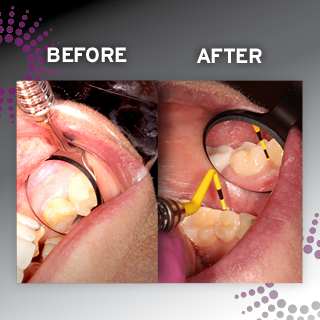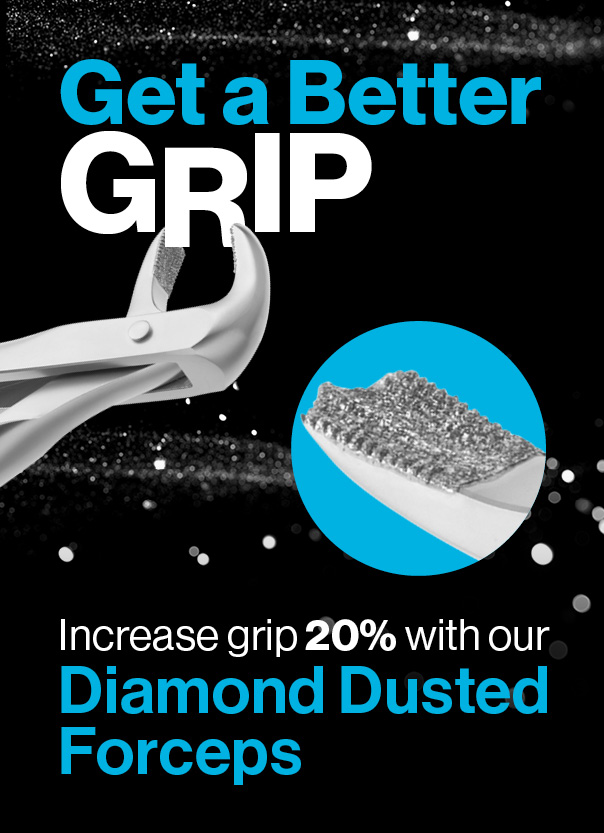Blog
When Is Too Much Light a Bad Thing in Dentistry?

How Reducing Glare Can Make a Big Difference in the Operatory
Dental hygienists rely on two senses to detect calculus: tactile sensitivity and direct observation. Take one away, and hard-to-access areas are bound to be overlooked, leading to incomplete deposit removal.
This is why we strive to strengthen our two key senses as much as possible, turning to instruments that give us better tactile sensitivity and an array of lights, lenses, and mirrors to improve our vision.
One would think the more light, the better the view, right? That’s not necessarily true. When light bounces off reflective surfaces and into our eyes, it can make it harder to see minute details intraorally. And that can be a problem.
The Problem with Glare
Practical experience tells us there can be such a thing as too much light. If you’ve ever driven into the sun in the early morning or late afternoon, you know all too well how blinding light can limit your vision. Commutes at these times of day can become a driving nightmare as you squint, adjust your visor, and avert your gaze to avoid the sun’s rays. The moment the sun dips below the horizon is like sweet relief.
This demonstrates how unwanted, undirected light can become distracting visual “noise.”
The impact of glare – reflected or refracted light – in dental care deserves more study. But what is clear is that there is a lot of light bouncing around the typical dental operatory. The light emitted by overhead lights and headlamps is stronger than ever, and banks of bright halogen bulbs illuminate many dental offices.

All this light can reflect off traditional metal instruments, limiting visibility. The next time you provide dental treatment, notice how often you shift your position to get a better viewing angle. The constant movement can add up, in terms of how long it takes to treat each patient and in the stress you inflict on your body. Dental professional are already at risk for developing musculoskeletal issues, and glare may be more than a visual nuisance.
A recent Dentistry iQ article pointed out that eye problems are the third-most reported occupational health issue among dental professionals. Better vision promotes better posture (which is one reason loupes are recommended for practitioners over 40, the age when our ability to focus up close begins to degrade).
Furthermore, a 2013 study published in the Journal of the Tennessee Dental Association notes that the “white” LED headlamps gaining popularity with dental practitioners actually emit a combination of green and blue light.
The hazards of retinal damage from blue light are well-documented, the study’s authors note. They also point out “the effect of high-intensity light reflective glare and magnification back to the practitioner's eyes” is unexamined.
Reducing Glare from Mouth Mirrors
Mouth mirrors are multifunctional instruments used in nearly every dental procedure. Mirrors are essential for visual inspection and oral examination. But a mirror can also be a significant source of glare.
Traditionally, mouth mirrors are held in place by stainless steel handles. Metal can be highly reflective, producing glare that obscures visibility.

Hu-Friedy has designed a new mouth mirror that addresses this issue. The HD Black Line Mirror head and handle are coated with a durable matte black Diamond Like Carbon (DLC) coating, which reduces glare up to 80 percent compared to shiny stainless-steel instruments. The matte finish cuts down on glare, while the black color provides better visual contrast in the mouth – both of which ensure superior visibility. This may mean you’ll find yourself needing to adjust your position less frequently to avoid unwanted shine.
It’s also worth pointing out that the material used in a dental mirror plays an important role in visibility, as well. Most mirrors are coated in rhodium or feature a resin (plastic) casing. In contrast, the High-Definition Mirror Glass used in the HD Black Line Mirror is 38.5% brighter than rhodium-coated mirror glass and 50% brighter than other front-surface mirror glass. The matte finish of the handle means this brightness does not increase glare and instead facilitates a sharper, distortion-free image for quicker and more accurate visibility.
Ultimately, light can be a friend or a foe to a dental hygienist. When unfocused and undirected, light becomes glare that can impede your vision and make it harder to do your work. But armed with the right tools, you can marshal the focused light you need to provide superior care for your patients.
Learn more about HD Black Line Mirrors here: https://www.hu-friedy.com/mirrors/hd-black-line-mirrors.

